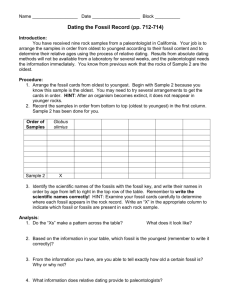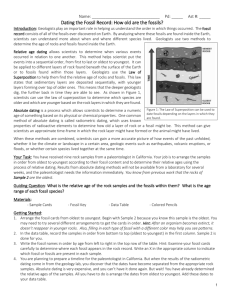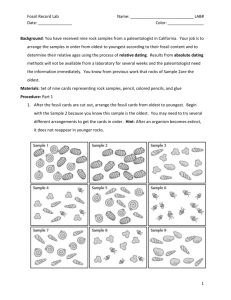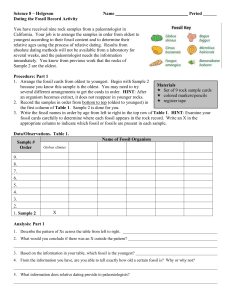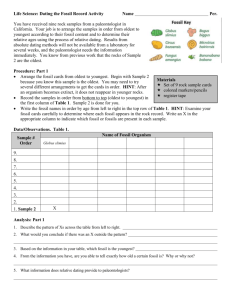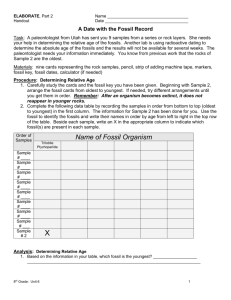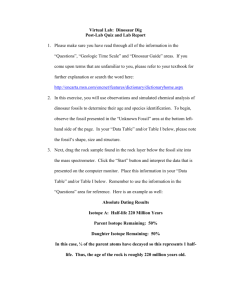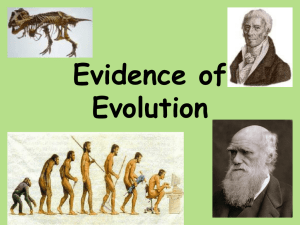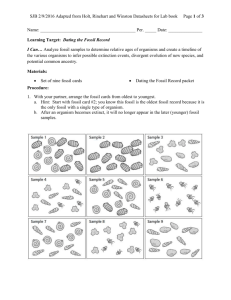Dating the Fossil Record
advertisement
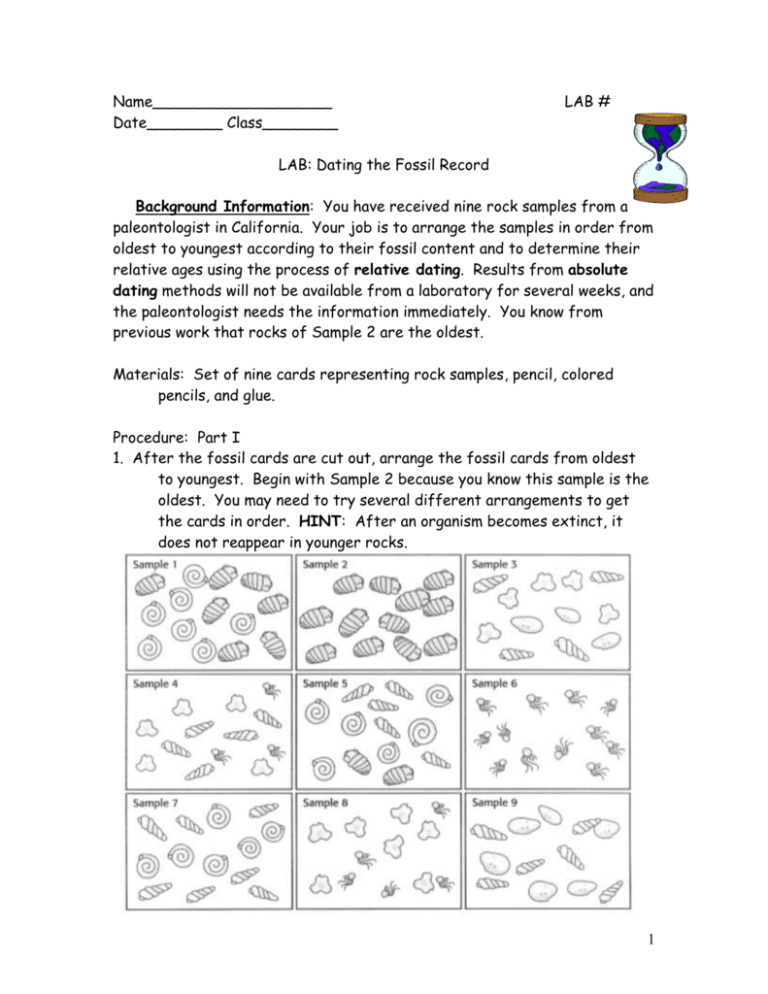
Name___________________ Date________ Class________ LAB # LAB: Dating the Fossil Record Background Information: You have received nine rock samples from a paleontologist in California. Your job is to arrange the samples in order from oldest to youngest according to their fossil content and to determine their relative ages using the process of relative dating. Results from absolute dating methods will not be available from a laboratory for several weeks, and the paleontologist needs the information immediately. You know from previous work that rocks of Sample 2 are the oldest. Materials: Set of nine cards representing rock samples, pencil, colored pencils, and glue. Procedure: Part I 1. After the fossil cards are cut out, arrange the fossil cards from oldest to youngest. Begin with Sample 2 because you know this sample is the oldest. You may need to try several different arrangements to get the cards in order. HINT: After an organism becomes extinct, it does not reappear in younger rocks. 1 2. In the table below, record the samples in order from bottom to top (oldest to youngest) in the first column. Sample 2 is done for you. 3. Identify the fossils with the fossil key, and write their names in order by age from left to right in the top row of the table. HINT: Examine your fossil cards carefully to determine where each fossil appears in the rock record. Write an X in the appropriate column to indicate which fossil or fossils are present in each sample. **STOP—Have your work checked by the teacher! 2 ANALYSIS: PART 1 4. The X’s do make a pattern across the table. What would you conclude if there were an X outside the pattern? 5. Based on the information in your table, which fossil is the youngest? 6. From the information you have, are you able to tell exactly how old a certain fossil is? Why or why not? 7. What information does relative dating provide to paleontologists? (Hint: Look up what relative dating means in your notes or textbook) Procedure: PART 2 8. You are planning to prepare a timeline for the paleontologist in California. But when the results, shown below, come in from the geology lab, you discover that the dates have become separated from the appropriate rock samples. Absolute dating is very expensive, and you can’t have it done again. But wait! You have already determined the relative ages of the samples. All you have to do is arrange the dates from oldest to youngest and label your table from bottom to top. Add these dates to your data table. Fossil Ages The dates provided by the geology lab are as follows: 28.5 mya, 30.2 mya, 18.6 mya, 17.6 mya, 26.3mya, 14.2 mya, 23.1 mya, 15.5 mya, and 19.5 mya. 3 ANALYSIS: PART 2 9. Based on absolute dating, which fossil organism lived for the longest period of time? Which fossil organism lived for the shortest period of time? Explain your answers. 10. Based on the information in your rock wall, what age range would you assign to the fossil of Circus bozoensis? Hint: Measure from the year that the fossil first appeared in the rock record to the first year it was absent. 11. Your table now contains all the information you need to make a rock wall (timeline) for the paleontologist in California. Use colored pencil and a piece of blank white paper to make your rock wall. Draw a rock wall showing several layers. To do this, label each layer with a date and the names of the fossils found there. Include drawings of the fossils. Be creative! 4
